Confirmation
Virtual Cardiovascular Assessments
CPG: Virtual Health
Created: April 14, 2020
Updated: --
Author: Chris Michel
Introduction:
Virtual care is healthcare at a distance and many assessments need to be adapted in the absence of a face-to-face interaction1. Clinical assessments involve the use of tools and instruments which are not available in virtual healthcare settings. Information will need to be gathered in other ways, such as listening to the patient’s cough, or the audible presence of adverse breath sounds, such as wheezing. As with conventional assessments, the clinician must determine if the patient is experiencing a particular problem and focus on that area first. If no particular problem is present, complete a generalized assessment of the relevant system2.
Assessment Overview:
- Because the cardiovascular system has several different parts, it makes sense to focus on one section at a time. It may be difficult to assess:
- Skin colour, temperature, or quality
- Capillary refill time
- Peripheral pulses
- Heart sounds
- Peripheral edema
- Blood pressure
- When conducting a virtual assessment of this system, use careful questioning to gather important information. Keep in mind that the cardiovascular and respiratory systems are closely related, and some of the assessment questions may be appropriate for either body system. As with all major body system assessments, determine first if the patient is experiencing any particular cardiovascular problem. If so, focus on that area first. If not, complete a general assessment of this system2.
Virtual Assessments:
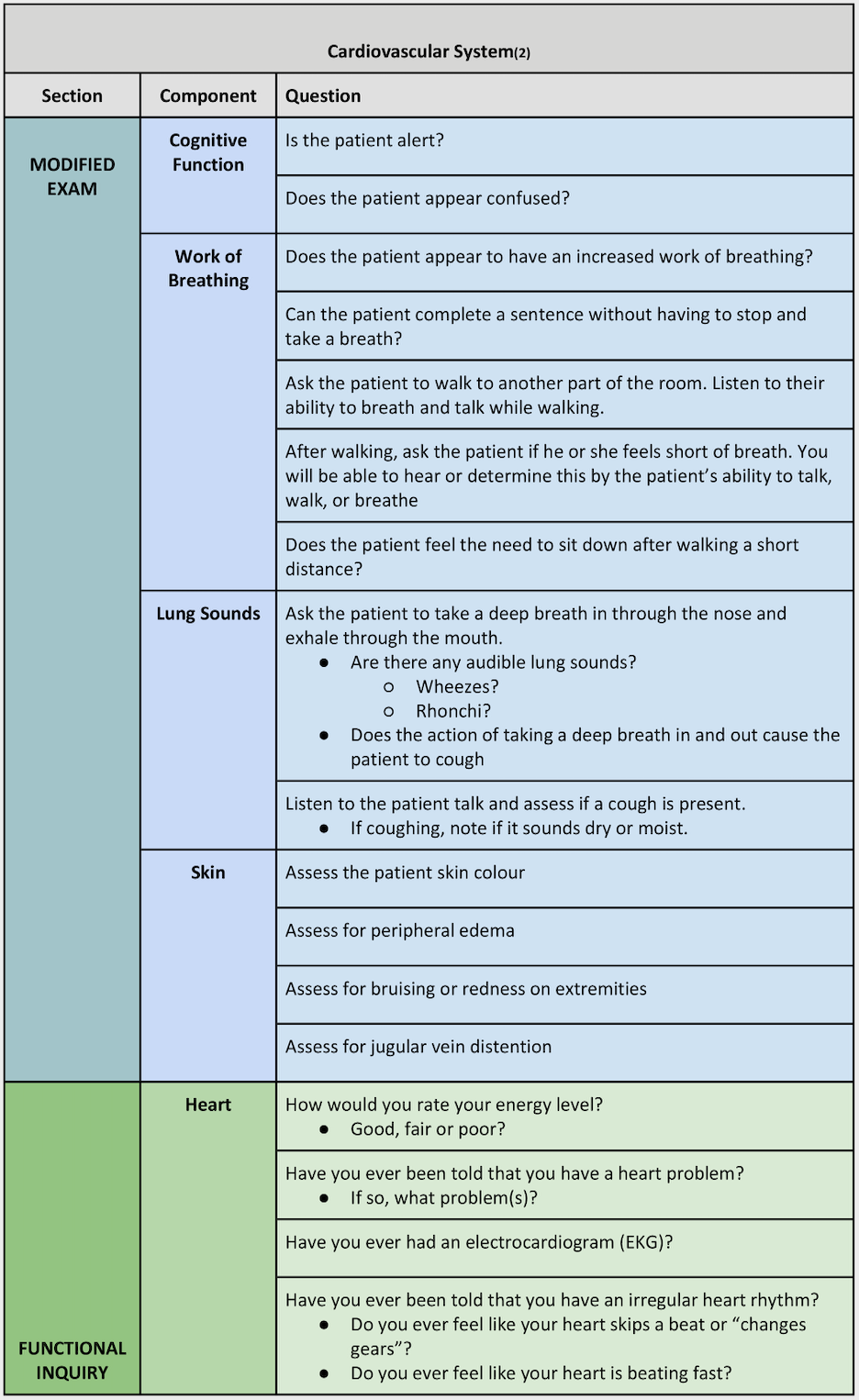
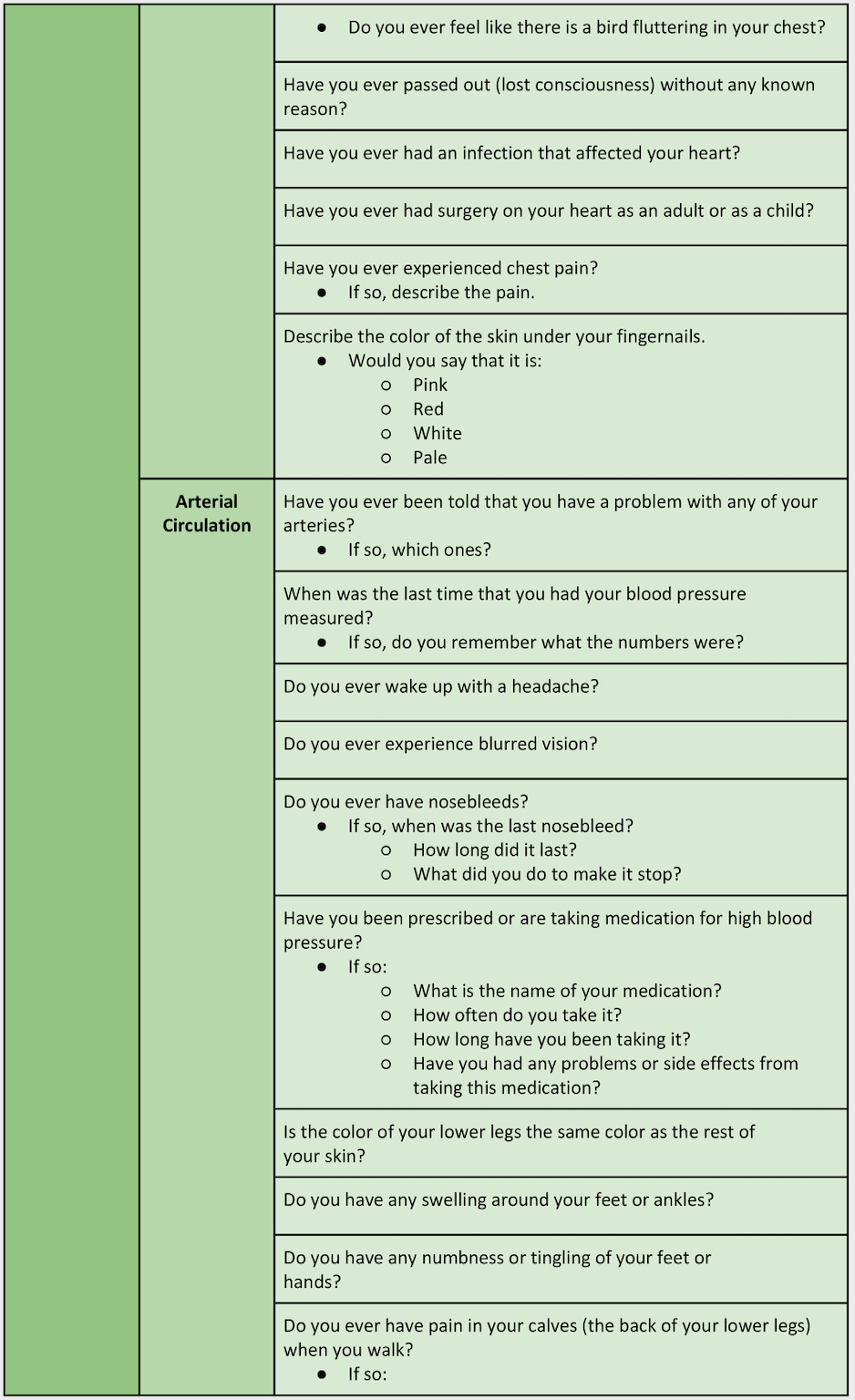
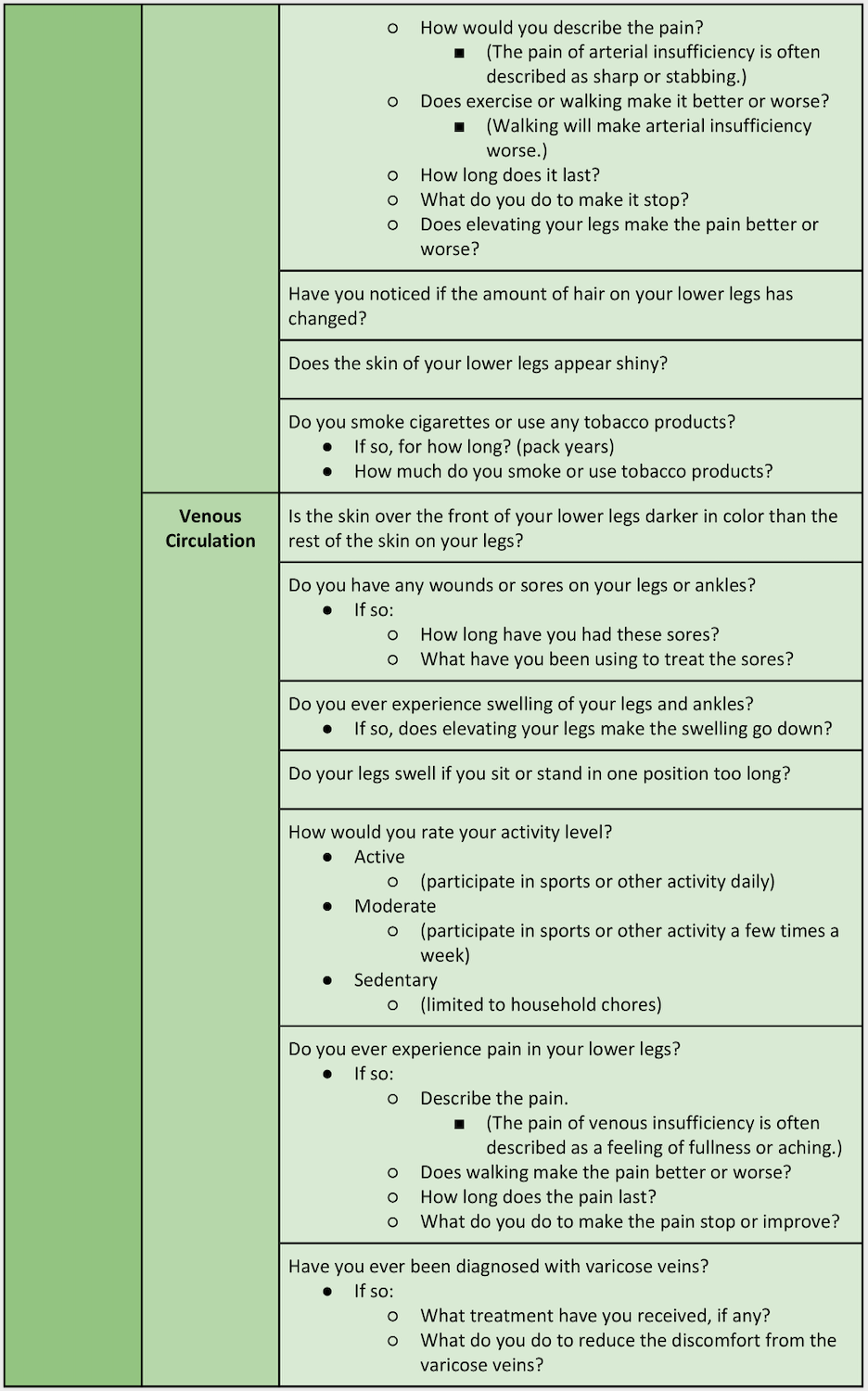
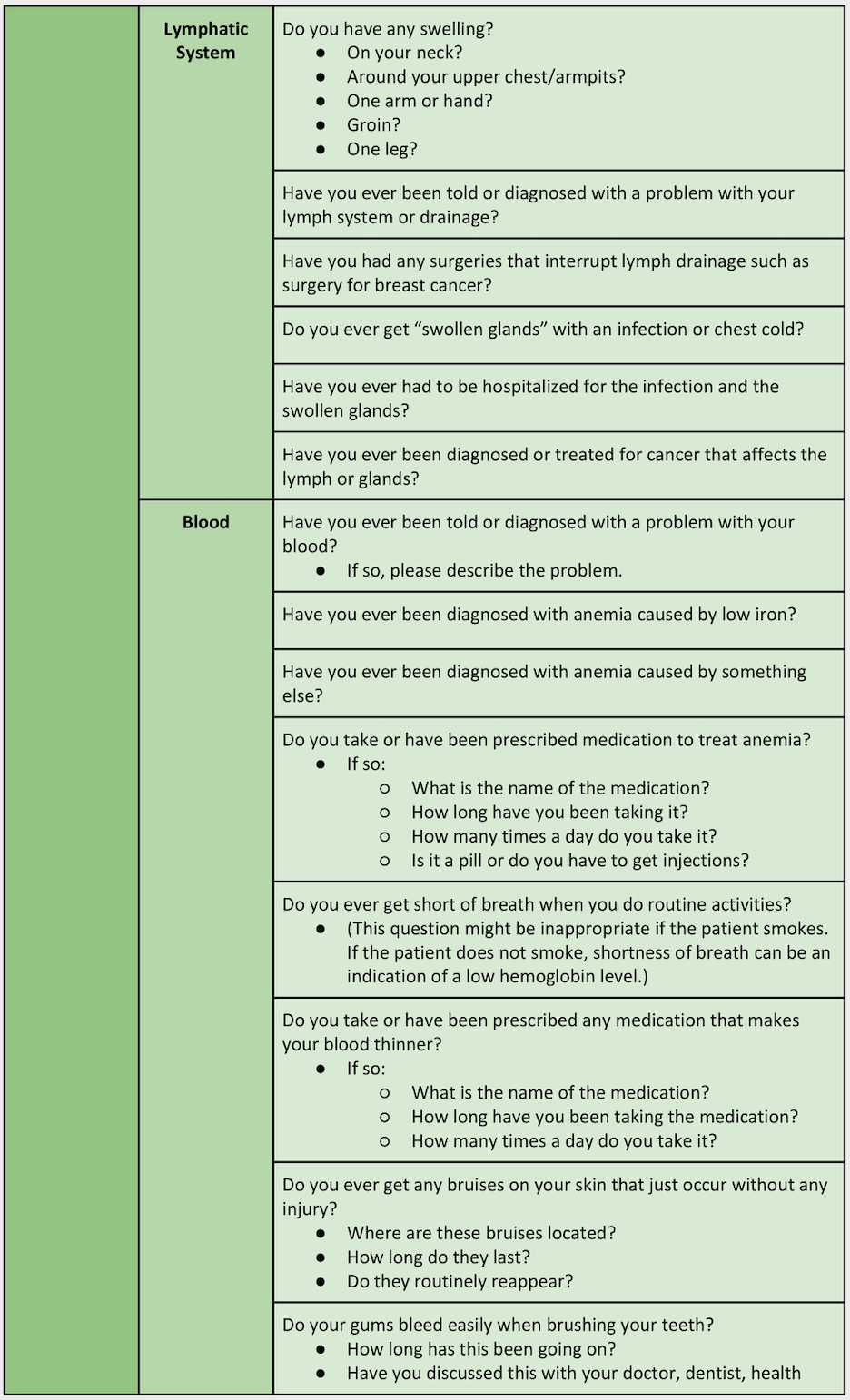
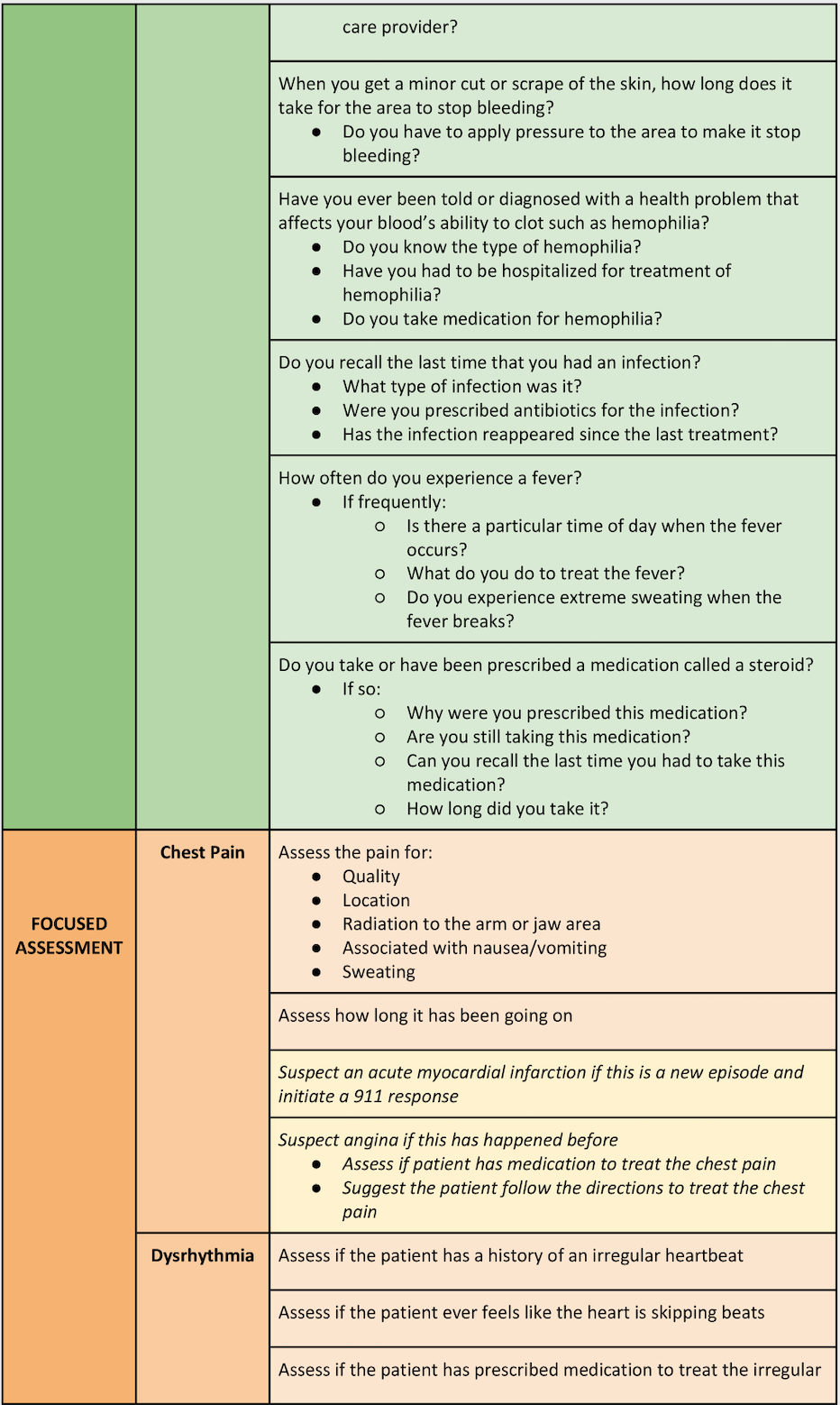
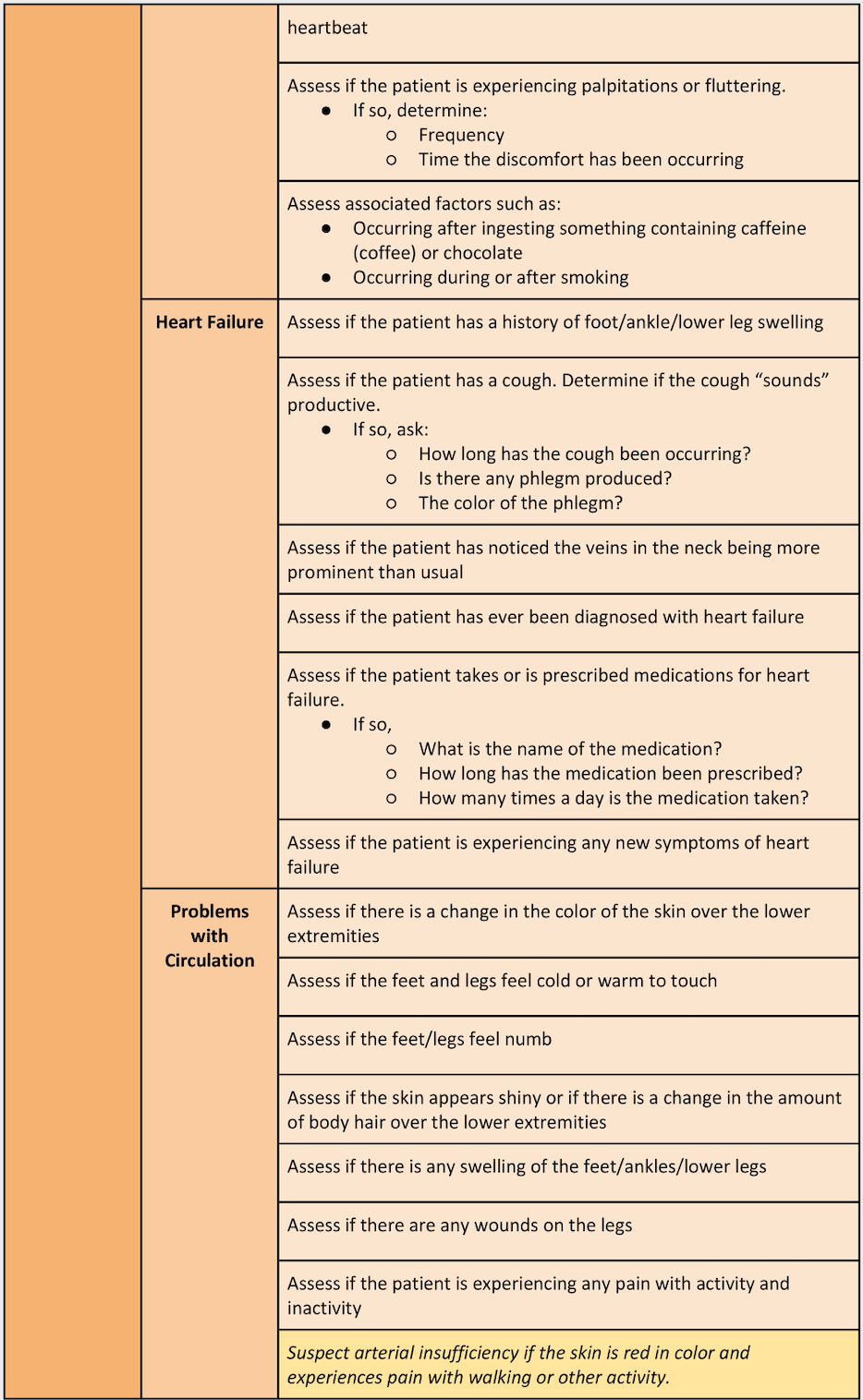
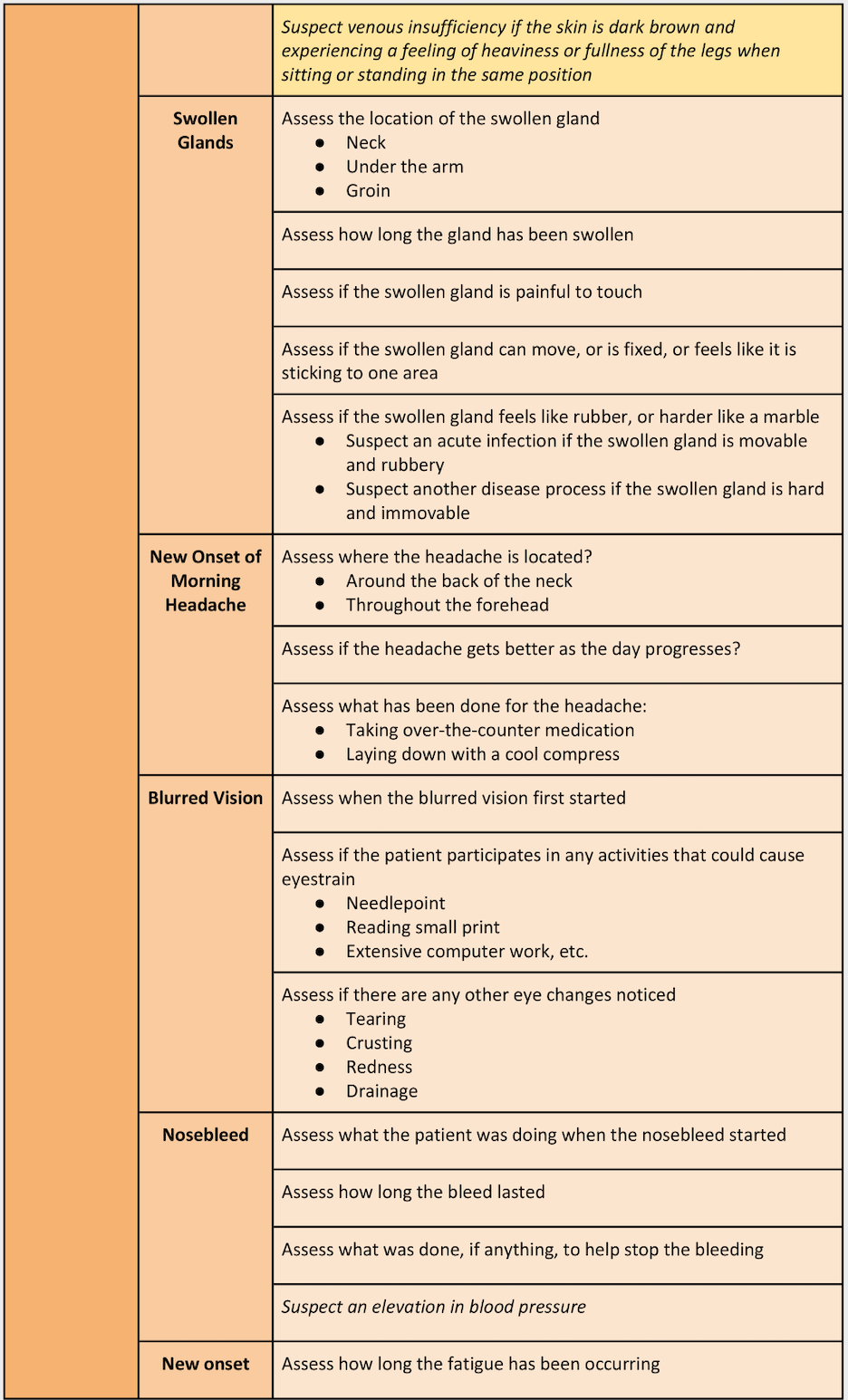
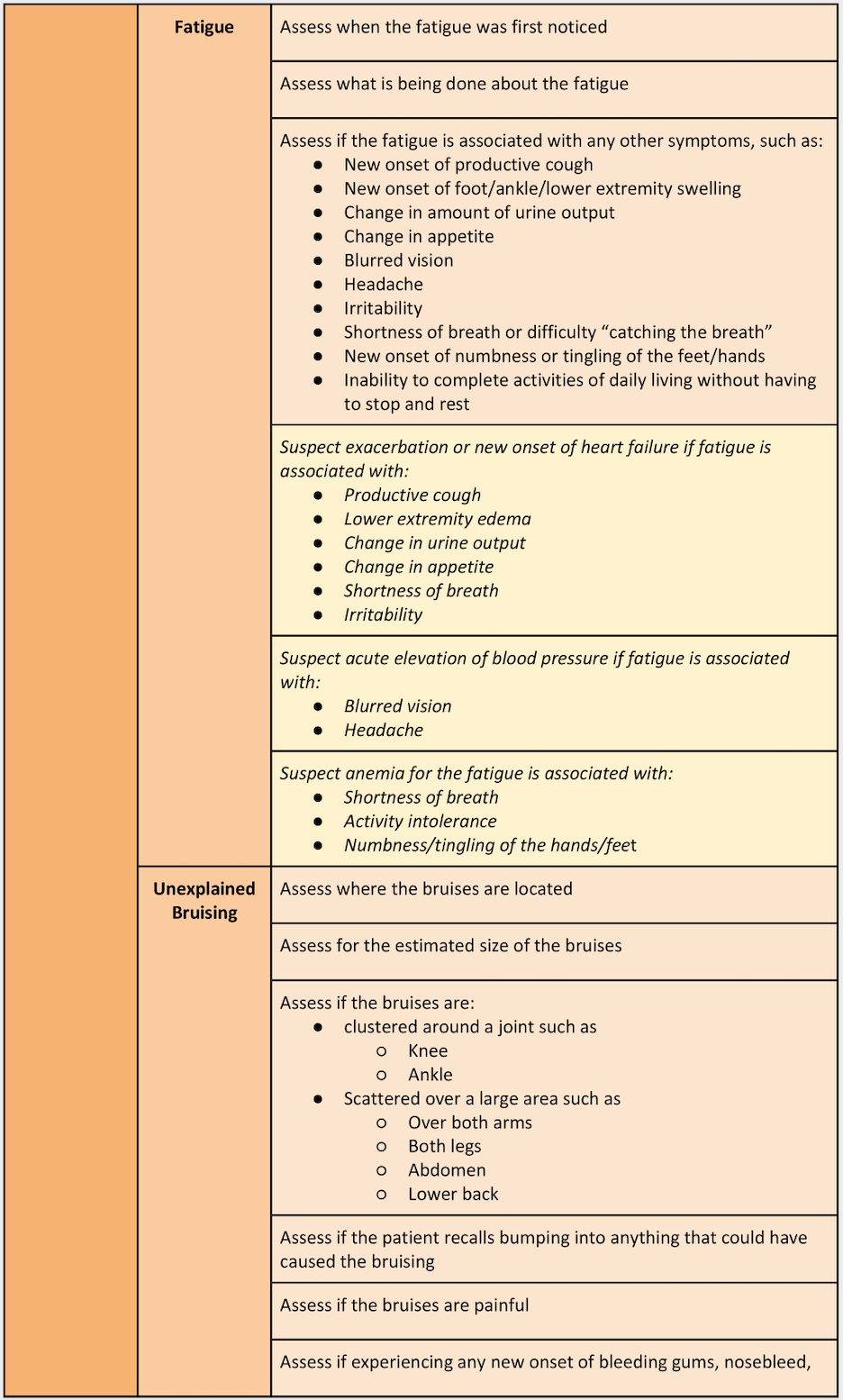
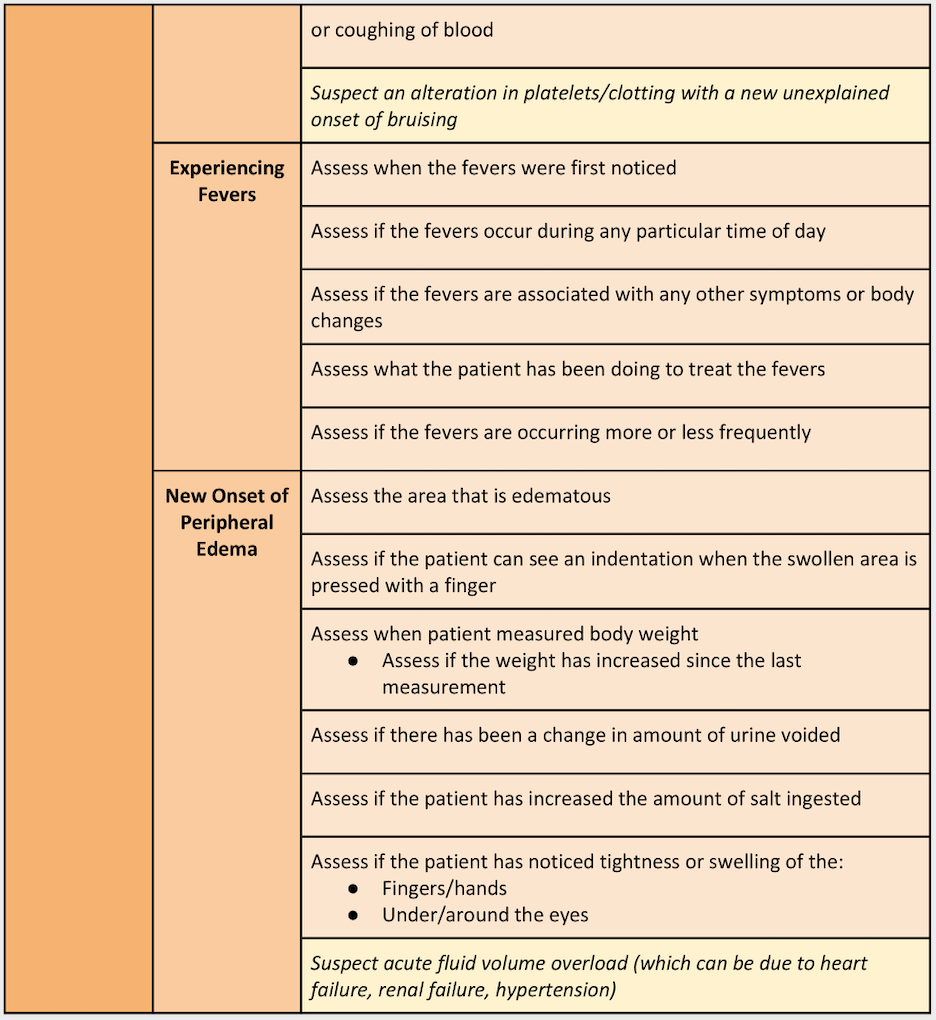
Risk Identification
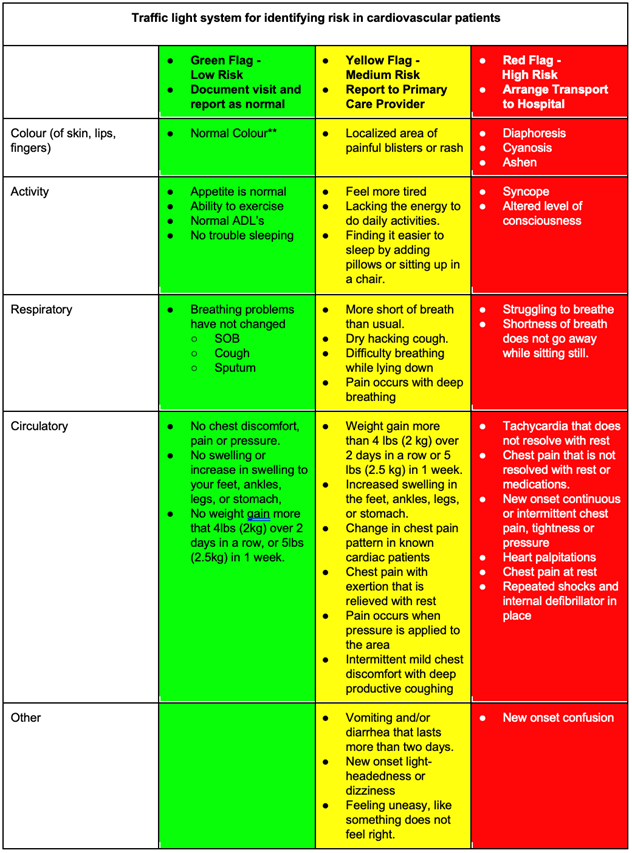
4, 5, 6, 7, 8, 9
* If able to measure using the patient's supplied equipment
** If able to assess using video conferencing tools
Decision and Action
- All patients with worsening cardiovascular symptoms (yellow) should be referred to their primary care provider for assessment.
- If the paramedic does not have an existing history with the patient, they should strongly consider emergency transport to hospital for any patients experiencing yellow flag symptoms.
- Patients with red flag symptoms should be transported to the emergency department for assessment and treatment
- Medication administration prior to arrival (ASA, NTG)
Additional Treatment Information:
- Many patients living with heart failure utilize a Heart Failure Zone plan, which is provided by their primary care provider. Patients should be encouraged to follow their action plan when and if they become symptomatic9.
References & Further Reading:
- Telemedicine; Researchers from University of Arizona Detail New Studies and Findings in the Area of Telemedicine (Clinical Examination Component of Telemedicine, Telehealth, mHealth, and Connected Health Medical Practices). Medical Devices & Surgical Technology Week [Internet]. 2018 Jun 10;140. Available from: https://ezw.lib.bcit.ca/login?url=https://search.proquest.com/docview/2047463316?accountid=26389
- Martich D. Telehealth Nursing : Tools and Strategies for Optimal Patient Care [Internet]. New York, NY: Springer Publishing Company; 2017. Available from: http://search.ebscohost.com/login.aspx?direct=true&AuthType=ip,sso&db=nlebk&AN=1442257&custid=s5672081
- Greenhalgh T, Koh GCH, Car J. Covid-19: a remote assessment in primary care. BMJ [Internet]. 2020 Mar 25;368:m1182. Available from: http://www.bmj.com/content/368/bmj.m1182.abstract
- Willis S, Dalrymple R. Fundamentals of Paramedic Practice : A Systems Approach [Internet]. Hoboken, NJ: Wiley-Blackwell; 2020. (Fundamentals; vol. Second edition). Available from: http://libproxy.jibc.ca:2048/login?url=https://search.ebscohost.com/login.aspx?direct=true&db=nlebk&AN=2240099&site=ehost-live&scope=site
- Briggs J. Telephone Triage Protocols for Nursing [Internet]. Vol. 5th ed. Philadelphia: Wolters Kluwer Health; 2015. Available from: http://libproxy.jibc.ca:2048/login?url=https://search.ebscohost.com/login.aspx?direct=true&db=e000xna&AN=1473165&site=ehost-live&scope=site
- Justin L. Kaplan and Robert S. Porter, editor. Merck Manual Professional Version [Internet]. Whitehouse Station, NJ: Merck Sharp & Dohme Corp., A Subsidiary of Merck & Co., Inc.; 2020. Available from: http://online.statref.com/document/MgMqo5q0ZcWCLC6nQYXHuw‼
- Smith LM, Mahler SA. Chest Pain. In: Tintinalli JE, Ma OJ, Yealy DM, Meckler GD, Stapczynski JS, Cline DM, et al., editors. Tintinalli’s Emergency Medicine: A Comprehensive Study Guide, 9e [Internet]. New York, NY: McGraw-Hill Education; 2020 [cited 2020 Apr 14]. Available from: accessmedicine.mhmedical.com/content.aspx?aid=1166531231
- Storrow AB, Bales B, Collins SP. Acute Heart Failure. In: Tintinalli JE, Ma OJ, Yealy DM, Meckler GD, Stapczynski JS, Cline DM, et al., editors. Tintinalli’s Emergency Medicine: A Comprehensive Study Guide, 9e [Internet]. New York, NY: McGraw-Hill Education; 2020 [cited 2020 Apr 14]. Available from: accessmedicine.mhmedical.com/content.aspx?aid=1166531769
- Heart Failure Zones. Heart & Stroke Foundation;